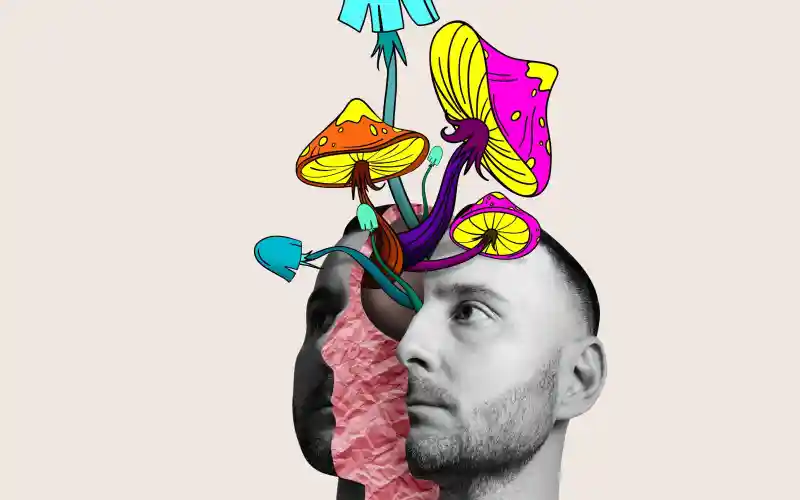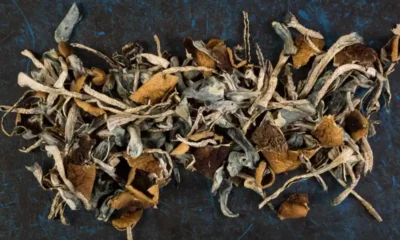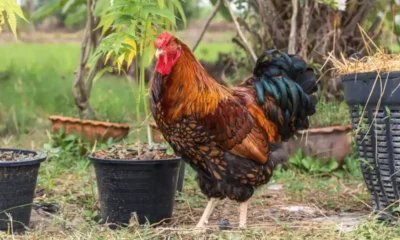Connect with us
Published
9 months agoon

The study, published in Neuroscience & Behavioral Review and aggregated by Psychedelic Spotlight, sought to broaden our understanding of how “psychedelics activate parts of the Default Mode Network,” which counters previous research indicating that psychedelics have the opposite effect.
The Default Mode Network, or “DMN,” is “a system of connected brain areas that show increased activity when a person is not focused on what is happening around them,” according to the publication Psychology Today.
“The DMN is especially active, research shows, when one engages in introspective activities such as daydreaming, contemplating the past or the future, or thinking about the perspective of another person. Unfettered daydreaming can often lead to creativity. The default mode network is also active when a person is awake. However, in a resting state, when a person is not engaged in any demanding, externally oriented mental task, the mind shifts into ‘default,’” the publication said.
Prior to the publication of the new study, “there was no research investigating how these two networks overlap and work together,” according to Psychedelic Spotlight, nor was there any “research on how these regions interact under the influence of psychedelics.”
In what was described as “a quantitative meta-analysis of 88 studies with a total of 2122 participants … [the study] revealed that the cingulate cortex, more specifically the BA23 and BA31 regions, plays an important role in how these networks overlap and that psychedelics affect how these areas interact with each other.”
“According to the researchers, these substances’ effects on the Theory of Mind and social cognition could unravel some of the mystery behind their therapeutic potential and how these networks relate to our sense of self,” Psychedelic Spotlight reported.
Studies into psychedelics and their effects on our minds and bodies are being published at a dizzying rate, as researchers try to unlock new discoveries on their potential.
A study last month suggested that psilocybin could represent an effective treatment for anorexia. Another study in May indicated that microdosing could be the key to enhancing one’s authenticity.
The authors of that study –– based on self-assessments from 18 microdosers in the Netherlands over a one-month period –– wrote that “microdosing could increase state authenticity through influencing people’s mood … and satisfaction with daily activities.”
“We propose that feeling and behaving authentically could have a central role in explaining the positive effects of microdosing on health and wellbeing that are reported by current research,” the authors wrote. “In conclusion, we have found evidence that the microdosing practice was related to higher ratings of state authenticity and that a behavioural mechanism is most likely at work. Our study opens the door to a new line of research as we propose that feeling and behaving authentically could have a central role in explaining the positive effects of microdosing on health and wellbeing that are reported by current research.”
Yet another recent study provided evidence that psilocybin could make for a cost-effective treatment option for depression.
“Psilocybin was shown to be cost-effective compared to the other therapies when the cost of therapist support was reduced by 50% and the psilocybin price was reduced from its initial value to £400 to £800 per person. From a societal perspective, psilocybin had improved cost-effectiveness compared to a healthcare perspective,” the British researchers wrote, adding that psilocybin “has the potential to be a cost-effective therapy for severe depression” but that it “depends on the level of psychological support that is given to patients receiving psilocybin and the price of the drug itself.”


Study Reveals State Cannabis Legalization Lowers Immigrant Deportation


DEA Challenges Bid To Use Psilocybin Under ‘Right To Try’ Legislation


Vegans Rejoice as Farmers Switch from Chickens to Hemp


Louisiana Legislative Committee Unanimously Passes Adult-Use Cannabis Framework Bill


Louisiana House Bill to Regulate Hemp Products Advances Along With Senate Bill to Ban


Cresco Labs Workers Reportedly De-Unionize
